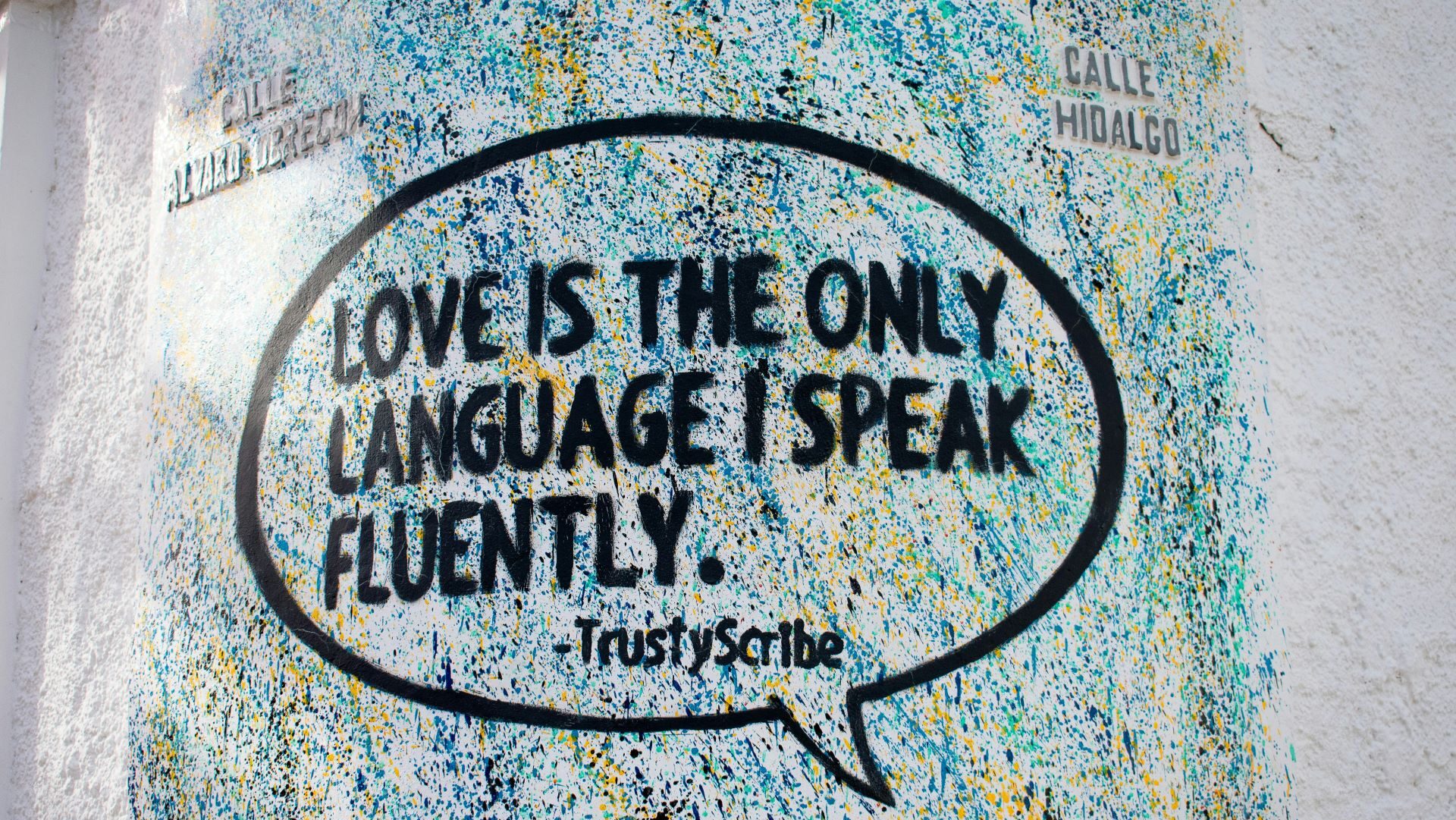There is a problem with simplified love languages: They overshadow the diverse ways people love, connect, and share intimacy.
Published in Sage Journals, the 2024 article, Popular Psychology Through a Scientific Lens: Evaluating Love Languages From a Relationship Science Perspective, by authors Dr. Emily A. Impett, Haeyoung Gideon Park, and Relationship Researcher, Amy Muise. They dissect the empirical validity of the widely embraced concept of ‘love languages’.
Originating from Dr. Gary Chapman’s seminal book, The 5 Love Languages. The notion suggests individuals express and experience love most profoundly in one of five distinct manners:
- Words of affirmation
- Quality time
- Receiving gifts
- Acts of service
- Physical touch
Despite the book’s monumental success and application in counseling settings and public initiatives, Dr. Impett and colleagues’ article reveals a striking scarcity of empirical evidence for Dr. Chapman’s core assertions.
Their exploration delves into three foundational claims of the love language theory:
- The existence of a primary love language for each individual
- The categorization of love into precisely five languages
- The enhancement of relationship satisfaction when partners communicate in each other’s preferred love language
Their critical analysis shows a much more complex reality that challenges the simplicity of Dr. Chapman’s model.
The Five Love Languages

Introduced in 1992, the concept of the Five Love Languages originates from the work of Dr. Gary Chapman. Detailed in his influential book, The Five Love Languages: How to Express Heartfelt Commitment to Your Mate. The framework suggests that understanding and speaking your partner’s primary love language can significantly enhance the emotional connection within a relationship. It used the Love Language Personal Profile (LLPP) to place each person into their primary love language.
Each love language represents a unique method of showing and receiving love. And how to recognize and appreciate the diverse ways individuals prefer to communicate their affection.
Dr. Gary Chapman created the Love Languages Hypothesis based on observations from a homogenous sample of couples. They were characterized as being all married, religious, and of mixed gender, likely sharing traditional values.
Not without merit, Dr. Chapman’s concept emphasized the significance of tailoring expressions of love to align with one’s partner’s preferences. How to foster deeper intimacy and understanding in relationships. The “appeal of Chapman’s typology,” explained by Nicholas Velotta, Sexologist and Head of Relationship Research at Arya, “lies in its simplicity and accessibility, offering a vocabulary for love that resonates with the public’s desire for personalized pathways to connection.”
The Critique
Dr. Impett and her research team aimed to evaluate the empirical foundation of love languages. They use critical analysis and methodological scrutiny.
Their methodology involved a comprehensive review of existing literature and empirical research related to love languages. By focusing on the core assumptions proposed by Dr. Chapman:
First, the existence of a primary love language for each individual.
Second, the categorization of love into five distinct languages.
Lastly, the enhancement of relationship satisfaction when partners communicate in each other’s preferred love language.
Lack of Empirical Evidence
The results reveal a notable lack of empirical support for Dr. Chapman’s hypothesis. Contrary to the notion that individuals have a single, dominant love language. The findings suggest that people appreciate all five love languages to varying degrees.
As highlighted by the researchers, “existing research on love languages does not provide strong support for the validity of the love languages core assumptions”. Additionally, “studies failed to find empirical support that couples in which partners match their primary love language report higher relationship satisfaction.”
A Forced-Choice Design

The researchers shed light on some of the significant methodological limitations of Chapman’s LLPP. Such as its forced-choice design, it does not allow the capture of individuals’ independent preferences for each love language.
This limit leads to a zero-sum scenario where respondents must choose between two options. Thus failing to accurately represent the complexity of personal preferences for expressing and receiving love.
“The truth is that the acts of loving and being loved cannot be conceptualized by what amounts to a pop-psychology ‘personality test’.” (N. Velotta)
Questionable Categorization of Love Languages
This critique is further supported by empirical findings that challenge the core assumptions of Dr. Chapman’s hypothesis. Notably the idea that each person has a single, primary love language.
Research has consistently shown that individuals value all five love languages, contradicting the notion of a singular primary language.
For instance, studies have demonstrated that “people tend to endorse all five love languages as meaningful ways of expressing love and feeling loved,” with ratings on Likert-type measures revealing a high valuation of all love languages.
Overlooked Dimensions of Love Expression
The analysis points out Dr. Chapman’s reliance on a homogenous sample of couples. This potentially overlooks diverse expressions of love that may be more relevant to couples with different values or life experiences.
This limitation may overlook nuances and varied expressions of love in non-traditional or non-religious relationships and in relationships that do not fit the male-female dynamic. Nor, does the framework account for the significance of supporting a partner’s autonomy or personal goals outside the relationship, which have been linked to relationship satisfaction.
“When we take what we learn from just this group and assume it applies to everyone, we’re not only missing a huge part of the picture, but we’re also continuing a pattern where the stories and needs of queer, BIPOC, and people in non-monogamous relationships are ignored.” (N. Velotta)
These findings suggest a more nuanced understanding of love languages, urging a departure from the oversimplified and rigid classification into five categories.
Love as a Balanced Diet

The researchers propose a metaphor to encapsulate the findings of relationship science, suggesting that, “the process of maintaining successful, loving relationships is akin to keeping a healthy, balanced diet.”
This metaphor serves as a counterpoint to the oversimplified framework of the five love languages. The authors argue that clinging too rigidly to one’s “primary” love language can lead to undervaluing other forms of love expression and ignoring the broader spectrum of a partner’s emotional needs and preferences.
Holistic Approach: Just as a healthy diet requires a variety of nutrients, such as carbs, protein, fat, vitamins, and minerals, relationships thrive on a broad spectrum of love expressions. These include spending quality time together, expressing appreciation, showing affection, helping and supporting each other, and making each other feel special through actions equivalent to words of affirmation, physical touch, acts of service, and giving gifts.
Tailoring to Specific Needs: Similar to how individuals may need different nutrients at various times or under specific conditions, relationships can benefit from emphasizing particular expressions of love based on current circumstances or needs. For instance, physical affection may be more crucial during times of stress.
Addressing Unmet Needs: The balanced diet metaphor suggests that if something is missing in the relationship, partners should discuss these unmet needs, akin to addressing nutritional deficiencies. This approach opens communication and responsiveness.
The Bottom Line
While the love language concept offers an accessible starting point for individuals to explore their relationship needs, the researcher’s work invites us to consider a more nuanced approach. For instance, viewing love in relationships as a balanced diet encourages us to appreciate the diversity of love expressions and their unique contributions to relationship health.
This perspective challenges us to move beyond simplistic categorizations and towards a more comprehensive understanding of what it takes to cultivate lasting love, echoing the need for a more informed and flexible approach to enhancing relationships.
“Experts haven’t been great at making these complex theories easy to understand, unlike the simple and popular Five Love Languages. It shows we need to do a better job at sharing what we know about love in a way that everyone can get it.” (N. Velotta)



